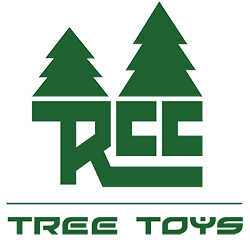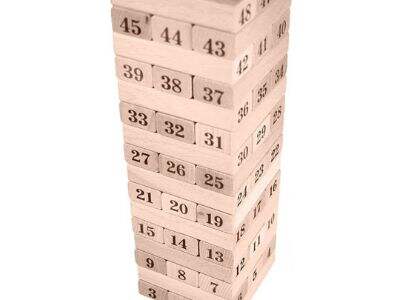V Tree Toys stále uvažujeme o najlepších materiáloch na použitie pri výrobe hračiek. Dnes sa budeme zaoberať dvomi veľmi bežnými materiálmi, ktoré používame: pevné drevo a štvrťdrevo. Pochopením toho, čo sú tieto materiály a aké majú vlastnosti, môžeme prijať informované rozhodnutia o hračkách, aby boli bezpečné, zábavné a mohli prinášať radost deťom.
Čo je pevné drevo a štvrťdrevo?
Pevné drevo je vydržateľný materiál, ktorý pochádza z pravých stromov. Má krásny, prirodzený vzhľad, ktorý mnohí obdivujú. Pevné drevo je extrémne vydržateľné, takže môžete očakávať, že prežije čas, aj keď deti na ňom často hrávajú. Avšak jednu vec nesmieš nikdy zabudnúť: pevné drevo môže byť veľmi drahé na nákup. To môže niektorým výrobcom hračiek urobiť ťažké rozhodnutie.
A potom máme plášťové drevo. To znamená, že plášťové drevo vzniká z tenkých vrstiev dreva, ktoré boli lepené dohromady. Tento proces vyrobí pevný materiál, ktorý je skutočne lacnejší ako masivné drevo. Plášťové drevo, aj keď je lacnejšie, je stále dosť pevné a trvanlivé na hračky, s ktorými sa deti budú mať zábavu.
Teraz, pri rozvažovaní nákladov používania týchto dvoch materiálov, musíme brať do úvahy niekoľko faktorov. Začneme tým, že musíme zohľadniť cenu dreva samotného, keď si nejaké vezmeme. Musíme tiež zohľadniť, koľko stojí vyrobiť hračky. Jedným spôsobom, ako by Tree Toys mohlo ponúknuť lacšie hračky, je prejsť z masivného dreva na plášťové drevo (The Workhouse, 2023).
Výhody masivného dreva a plášťového dreva v hračkách
Masivní drevo má mnoho výhod. Ide o prirodzený produkt, čo ho robí bezpečným pre životné prostredie a pre deti, aby s ním hráli. Mnohí rodičia hodnotia ekologicky príznivú, netoxickejšiu povahu hračiek z masivného dreva. Masivné drevo je neuväřiteľne silné a trvanlivé, čo ho robí ideálnou materiálovou voľbou pre hračky, ktoré budú podliehať drastickému zaobchádzaniu. Deti často upustia alebo hádzajú svoje hračky, a masivné drevo dokáže vydržať takýto spôsob hrania.
Plywood (vrstvené drevo) na druhej strane má svoje vlastné výhody. Je menej kruché ako masivné drevo, čo mu umožňuje byť ohnuté a nepretrhnúť sa. Táto flexibilita robí vrstvené drevo menej pravdepodobným, že sa bude deformovať alebo rozpraskanúť v priebehu času, čo je dôležitá časť hračiek, ktoré môžu byť počas hrania skreslené alebo ohnuté. Keď porovnávame dobré stránky masivného dreva v porovnaní s vrstveným, naozaj musíme zvážiť, čo chceme od našich hračiek.
Pre Tree Toys môže byť pevné drevo lepšie pre klasické drevené hračky, ako sú hračkáreňské vlaky alebo stavebné bloky. Pevné drevo má všetku sílu a prirodzený vzhľad, ktoré tieto druhy hračiek vyžadujú. Naproti tomu môžu byť hračky, ktoré musia byť pružné alebo mať detailné dizajny, ako sú hlavolamy alebo hračky, ktoré môžu meniť tvar, lepšie vyrobené z fóliového dreva.
Pripomenuli ste si náklady spojené s použitím pevného alebo fóliového dreva?
Ak skontrolujete použitie pevného dreva na vývoj hračiek, kvalitne silné a krásne prirodzené, uvidíte, že je to bohaté na kvalitný materiál. Veľa ľudí ocenia estetiku a textúru pevných drevených hračiek. Mäjte na pamäti, že predbežná cena pevného dreva je obvykle vyššia ako fóliového dreva. Diskutabilne veľkým faktorom pre podniky ako sú Tree Toys, ktoré musia zabezpečiť, aby sa náklady pevne kontrolovali, je práve tento aspekt.
Na druhej strane, Drevovaná mozaika môže ušetriť Tree Toys peniaze na materiáloch. Nový materiál je ešte lacnejší, avšak nám umožňuje vytvárať kvalitné hračky, ktoré si budú deti milovať. Pred rozhodnutím, ktoré je pre vás lepšie, zvážte náklady spojené s používaním pevného dreva oproti drvenému plachtu. Zistili sme, že pevné drevo obvykle stojí trochu viac na začiatku, ale vede k trvalejším a vydržateľnejším hračkám, čo je trend, ku ktorému prispievame pre našich zákazníkov. Hoci pre Tree Toys môže byť použitie drveného plachtu voľbou s nízkym rozpočtom, hlavne pre nás, keďže vyrábame veľa hračiek.
Drvený placht môže ušetriť peniaze v dlhodobom horizonte
Ale sú tu niekoľko bodov, ktoré treba zvážiť pri úsporách z používania drveného plachtu namiesto pevného dreva pre dlhodobé úspory? Náklady na údržbu a opravy: Ďalším dôležitým faktorom je, že pevné drevo môže vyžadovať viac starostlivosti a opráv počas času, takže vyššie náklady v budúcnosti. Pevnodrevené hračky, ktoré sa môžu pokaziť, môžu vyžadovať ich nahradenie alebo opravu pevného dreva, a to môže byť pomeročne drahé, ak sa nebudú správne udržiavať.
Vzdelávacia drevená hračka sú tiež menej predisponované k deformácii a praskaniu. To znamená, že vyžadujú menej údržby a oprav väčšinu času. Pretože používame fínu drevnu tabuli, to znamená, že Tree Toys môže šetriť peniaze v čase a peniaze sú dôležité na tom, aby sme mohli udržiavať naše podnikanie živé a uistili sme sa, že budeme môcť ďalej tvoriť hračky, ktoré prinášajú radost deťom.
Tužné drevo vs. fína drevná tabula pre hračky
V koniec koncov, voľba medzi tužným dreveom a fínou drevnou tabulou pri výrobe hračiek v Tree Toys závisí od toho, čo vyžaduje každá jednotlivá hračka. Niektoré hračky musia byť extrémne pevné a veľmi vizuálne atraktívne, v týchto prípadoch môže byť tužné drevo vhodnejšie. Príklady môžu byť hračky ako panenky, ktoré by mali byť trvanlivé alebo vozidlá, ktoré by mali vydržať veľa používania.
Ak alternatívou bolo pracovať s hračkou, ktorá potrebovala nejakú flexibilitu alebo mnoho dizajnov (ako transformovateľná hračka alebo hádanka), fína drevná tabula by bola relevantnou alternatívou. Chceme teda maximalizovať rozhodnutie pre každú hračku, ktorú vyrábame.
Celkovo vzato, či ide o pevné drevo alebo o laminát, každý z nich má svoje dobré a zlé stránky v súvislosti s výrobou hračiek. Náš pracovný proces tu v Tree Toys bude pokračovať v zohľadňovaní nákladov a dlhodobého dopadu používania týchto materiálov. Chceme vyrábať bezpečné, kvalitné hračky a priniesť radosť a štastie do srdcí detí vo všetkých rohoch sveta. Na našej ceste chceme, aby každé dieťa hrálo s našimi hračkami, a pochopenie materiálov, ktoré používame, nás na tejto ceste sprievodní.

 EN
EN
 AR
AR
 BG
BG
 HR
HR
 CS
CS
 DA
DA
 NL
NL
 FI
FI
 FR
FR
 DE
DE
 EL
EL
 IT
IT
 JA
JA
 NO
NO
 PL
PL
 PT
PT
 RO
RO
 RU
RU
 ES
ES
 SV
SV
 IW
IW
 ID
ID
 SR
SR
 SK
SK
 UK
UK
 VI
VI
 HU
HU
 TR
TR
 MS
MS
 GA
GA
 CY
CY
 IS
IS
 HY
HY
 MR
MR
 KK
KK
 SU
SU
 UZ
UZ
 HAW
HAW
 XH
XH
